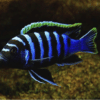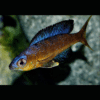To provide the best experiences, we use technologies like cookies to store and/or access device information. Consenting to these technologies will allow us to process data such as browsing behaviour or unique IDs on this site. Not consenting or withdrawing consent, may adversely affect certain features and functions.
The technical storage or access is strictly necessary for the legitimate purpose of enabling the use of a specific service explicitly requested by the subscriber or user, or for the sole purpose of carrying out the transmission of a communication over an electronic communications network.
The technical storage or access is necessary for the legitimate purpose of storing preferences that are not requested by the subscriber or user.
The technical storage or access that is used exclusively for statistical purposes.
The technical storage or access that is used exclusively for anonymous statistical purposes. Without a subpoena, voluntary compliance on the part of your Internet Service Provider, or additional records from a third party, information stored or retrieved for this purpose alone cannot usually be used to identify you.
The technical storage or access is required to create user profiles to send advertising, or to track the user on a website or across several websites for similar marketing purposes.

















Emily Carter (verified owner) –
I recently purchased the Haplochromis Sp. Ch 44 Cichlid, and I couldn’t be happier with this little guy! After just a couple of weeks in my aquarium, he has already started to show off those beautiful colors, making my tank look so vibrant. As a caring fish parent, I always prioritize fish health and happiness, and I can see that he’s thriving in the environment I’ve created. I’ve noticed he’s quite sociable too, getting along well with my other Lake Malawi cichlids.
Compared to other cichlid fish I’ve kept in the past, this species has a unique personality and is truly engaging to watch. The shipping was super fast, and he arrived healthy and active. The only small concern is that he can be a bit shy at first, but with the right setup, he quickly warms up. I would highly recommend the Haplochromis Sp. Ch 44 to anyone looking to brighten up their freshwater fish collection. Whether you’re a beginner or an experienced hobbyist, this cichlid will surely bring joy to your aquarium!